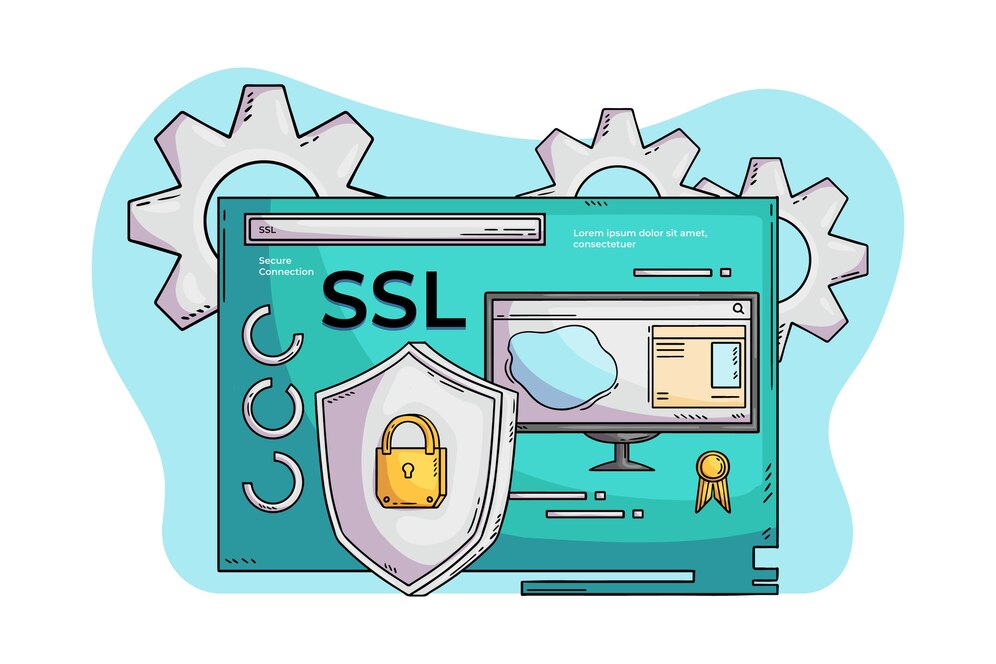What is Selenium WebDriver? A Deep Dive into Browser Automation
The fast-changing software industry requires modern software applications to function properly on different browsers, which has become a vital aspect of software development. Quality assurance teams now need essential automation tools to perform testing activities. The testing tool known as Selenium WebDriver has become highly fashionable among professionals.
Web scraping automation tools and testing applications use Selenium WebDriver as their primary platform. This article explores what is Selenium WebDriver by dissecting its functions, working concept, and transformative role in web automation.
Introduction to Selenium WebDriver
As an open-source tool, Selenium WebDriver permits the automation of web applications for testing tasks. Users now skip manual web interaction because Selenium WebDriver lets programmers create automated browser scripts that perform simulated user behavior to improve web application test coverage for QA teams.
Jason Huggins created Selenium in 2004 as the browser automation standard. It now maintains universal programming language support for Java, Python, C#, Ruby, and JavaScript.
The core element of Selenium is WebDriver, which provides better flexibility and more excellent stability through its improved version over Selenium RC (Remote Control). WebDriver operates directly from browser interfaces to perform automation tasks efficiently and speedily since it does not need server components.
Why Use Selenium WebDriver?
Web application testing now requires examination across different platforms, devices, and browsers. Evaluating these applications through manual processes takes a considerable amount of time and can easily be undermined by human mistakes. The process needs Selenium WebDriver as its ideal automation tool.
Key Benefits:
- Cross-Browser Testing: Selenium WebDriver enables users to conduct simultaneous tests across all main browsers including Safari, Firefox and Chrome and Internet Explorer.
- Multi-Language Support: Software developers easily integrate Selenium WebDriver into their existing development procedures because it supports programming languages Java, Python, C# and Ruby.
- Integration with Testing Frameworks: The Selenium WebDriver provides a simple method to integrate testing frameworks such as JUnit TestNG and NUnit thus permitting teams to run test cases while maintaining effective management systems.
- Parallel Test Execution: Sensor Grid tools allow Selenium WebDriver to run tests simultaneously on various machines which helps reduce test execution time while expanding the scope of tests.
- Continuous Integration (CI) Support: Continuous Integration (CI) Support is available in the Selenium WebDriver tool through its smooth integration with such systems that automatically execute tests immediately after new code submissions to the system.
- Scalability and Flexibility: The scalability and flexibility features enable users to access different environments through Selenium WebDriver during testing operations across machines and devices. The tool matches test requirements to application scale because it handles both small and complex test suites.
- Community Support and Documentation: Selenium WebDriver maintains a large, enthusiastic community alongside complete documentation, which helps users get assistance for popular problems and access detailed information, aiding both testers and developers in their work. The tool is a dependable solution for extended periods because developers update it frequently and implement improvements.
The Evolution of Selenium
Selenium developed through a continuous advancement process because organizations needed better tools to automate web browser interactions. This section reviews the developmental progression of What is Selenium now and how it has evolved throughout history:
- Selenium 1 (Selenium RC): Selenium 1 (Selenium RC) began as an automation system designed to operate web browsers, which used Selenium Remote Control (RC) as its core element. The automated server function enabled communication with both browser instances and test scripts. One major flaw existed for Selenium RC users because it operated slow and caused problems with browser compatibility.
- Selenium 2 (WebDriver): Selenium 2 (WebDriver) appeared in 2011 to provide an enhanced technology which removed the requirement of a server component from Selenium Remote Control. The program directly talks to browser instances, which results in faster and more dependable browser automation operations. The Selenium framework adopted Selenium WebDriver as its primary tool for automating browsers through its available software components.
- Selenium 3: Selenium 3.x continued to improve WebDriver’s functionality and eliminated support for Selenium RC for users. The updated platform introduced help for modern browsers and enhanced reliability while effectively combining with contemporary web resources.
- Selenium 4: The major framework update in Selenium 4 added W3C standardization of the WebDriver, a refined API set, and enhanced browser compatibility. Selenium 4 delivered better management of contemporary web applications and enhanced execution speed while boosting its browser development tool interface.
How Selenium WebDriver Works
The communication channel between Selenium WebDriver and web browsers functions through browser-specific drivers. The browser drivers act as an intermediary between test scripts and browsers while they execute commands such as click and navigate and validation operations. The detailed workflow of Selenium WebDriver can be explained through the following steps:
Basic Workflow:
- Test Script: An automation script writer uses programming language code (Java or Python) to create instructions controlling browser operations during testing.
- Selenium WebDriver: The user instructions undergo conversion to programming code by WebDriver which the browser accepts.
- Browser Driver: The browser driver infrastructure composed of ChromeDriver for Chrome and GeckoDriver for Firefox enables browser command translation by WebDriver to execute tasks such as page loading and button clicks.
- Browser: The browser executes the action and returns the results to the WebDriver.
- Assertion/Validation: The results are compared with expected outcomes to check if the test passes or fails.
Components of Selenium WebDriver
A complete set of components makes up Selenium WebDriver, which incorporates automated browser interactions while performing together:
- WebDriver Interface: The main interface through which all browser interactions occur. It defines basic methods such as get(), click(), findElement(), etc.
- Browser-Specific Drivers: These are browser-specific implementations of the WebDriver interface, such as:
- ChromeDriver: For Chrome
- GeckoDriver: For Firefox
- SafariDriver: For Safari
- EdgeDriver: For Microsoft Edge
- Selenium Grid: Selenium Grid functions as an execution system which distributes tests to operate on various machines alongside different browsers to accelerate test completion.
- Selenium IDE (Integrated Development Environment): Users can operate the Selenium IDE Integrated Development Environment through browser extensions including Chrome and Firefox for the recording and playing back of simulation tests. The tool functions well for new users because it helps create automation scripts quickly.
Setting Up Selenium WebDriver
To establish Selenium WebDriver, you should start by implementing the required libraries, creating a programming environment, and downloading the necessary browser drivers.
Steps to Set Up Selenium WebDriver:
- Install Programming Language Libraries:
- For Java: Add the Selenium WebDriver dependency in your pom.xml file (for Maven) or download the JAR files from the Selenium website.
- For Python: Use pip install selenium.
- Download Browser Drivers:
- Download the browser driver specific to the browser you are automating (e.g., ChromeDriver for Chrome).
- Write the Automation Script:
- The WebDriver API enables you to create scripts that perform tasks, starting by launching pages and then pushing buttons accompanied by form completion and text validation functions.
- Run the Test:
- Execute the test in your preferred IDE or command line. The WebDriver will launch the browser and run the automation script.
Advantages of Using Selenium WebDriver
The wide popularity of Selenium WebDriver as a web browser automation tool exists for excellent reasons. Selenium WebDriver demonstrates several advantages when operated for web automation, as shown below:
- Cross-Browser Compatibility:
The multi-browser compatibility in Selenium WebDriver allows developers to maintain application performance throughout different operating platforms.
- Language Flexibility:
The automation scripts written for Selenium WebDriver can be produced in different programming languages, including Java, Python, C#, Ruby, and JavaScript, among others. Developers can select their preferred programming language because of this feature.
- Speed and Efficiency:
Due to eliminating its requirement for command execution servers, Selenium WebDriver performs tests at faster speeds than earlier tools such as Selenium RC.
- Support for Modern Web Technologies:
Selenium WebDriver effectively supports HTML5, AJAX, and dynamic content in modern web applications. The program also supports additional complex Web functionalities such as drag-and-drop operations and JavaScript-based pop-up features.
- Integration with CI/CD Pipelines:
Anyone can integrate Selenium WebDriver directly into Jenkins, TeamCity, and Bamboo, which are among the popular CI/CD tools. The incorporation becomes possible through automation testing because development cycles can run tests while continuously verifying application quality.
Challenges and Limitations
Although Selenium WebDriver provides robust functionality, it presents particular challenges during implementation:
- Dynamic Content Handling: WebDriver’s dynamic content management capabilities might experience difficulties when working with content that loads dynamically and visible elements that need waiting time.
- Limited Support for Non-Web Applications: Selenium WebDriver does not provide native functionality to support tests on computer and mobile applications.
- Browser Compatibility Issues: The broad browser support of Selenium WebDriver does not eliminate the possibility of achieving inconsistent test results because different browser versions may present unique behavioral traits.
- Maintenance Overhead: The required maintenance for web application evolution increases costs due to the need to update automation scripts.
Best Practices for Using Selenium WebDriver
These best practices will maximize your benefits from using Selenium WebDriver:
- Wait for Elements to Load: Explicit waits should guarantee elements interact before executing operations.
- Use Page Object Model (POM): Your test code should follow the Page Object Model (POM) Design Pattern for code modularity and reusability.
- Handle Browser-Specific Issues: The combination of browser-specific capabilities and settings enables tests to operate correctly within different browsers.
- Optimize Test Execution: Utilize cloud-based testing tools such as LambdaTest or Selenium Grid to execute tests concurrently in several browsers.
LambdaTest is an AI-Native test execution platform that enables you to perform automated and manual tests at scale on more than 3000+ different browser-OS combinations and 10000+ real environments. It allows testers to run Selenium WebDriver scripts across different environments without the need to manage complex local browser setups. This platform provides KaneAI, an AI testing solution for your software that makes it simple to write test scripts in English and build, manage, and deploy your tests, do complete E2E testing.
Key Benefits of LambdaTest for Selenium WebDriver:
- Parallel Test Execution: Using LambdaTest, users can run Selenium WebDriver tests on a cloud grid simultaneously to reduce end-to-end test durations.
- Cross-Browser Compatibility: The combination of various browsers and operating systems requires tests to execute flawlessly for all users with Cross-Browser Compatibility.
- Real-Time Browser Testing: With LambdaTest, you can use live browsers that enable real-time issue inspection and debugger functionality.
- Integration with CI/CD Pipelines: Test automation is made simple as part of your development lifecycle with LambdaTest’s easy connection with continuous integration technologies like Jenkins.
- Leverage Assertions: The test scripts should include assertions that help validate system behavior and confirm that the application functions correctly.
In Conclusion
With Selenium WebDriver, we can automate browser interactions now through a tool that provides speed and accuracy when performing tests on web applications. This tool stands out because it operates across browsers and languages through its integration into CI/CD pipelines to benefit developers as well as testers. Selenium WebDriver introduces specific difficulties, but its benefits have proven significant compared to the obstacles. Effective browser automation results through the adoption of best practices along with updates to the framework according to teams who want to maximize their automation efforts.
Selenium WebDriver is a top choice for web automation because its ongoing development ensures stronger capabilities, which will benefit users in the upcoming years.






